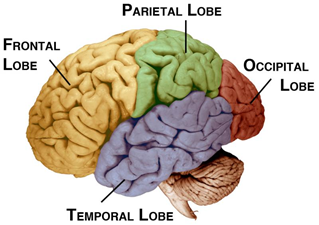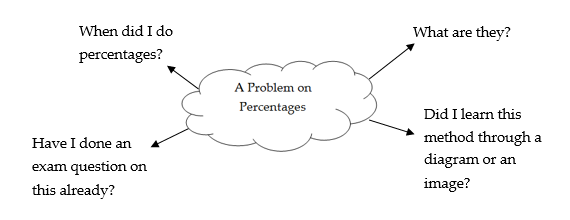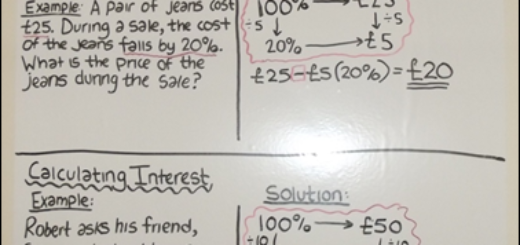How The Brain Works
Before we can advise you on how to best prepare for your upcoming exams, let’s explore how the brain actually works. Remember the brain is the most powerful organ in the body. It controls our entire body and defines who we are as human beings. It’s important to understand the basics of how it works.
There are 3 important ways of learning: Visual, Verbal & Rote. You should not focus on one form in particular, but rather have a good balance of all three. The first two forms: visual and verbal tap into different parts of the brain. The main part of the brain is called the Cerebrum. This is what causes an individual to think and act. The cerebrum itself is divided into four sections, called ‘lobes’. Refer to the image below:

The Occipital Lobe is where the visual processing takes place i.e. visual learning. Whenever an individual sees something, the brain interprets it; the shape and colour and attempts to store it.
The Temporal Lobe is where auditory perception takes place or in other words, verbal learning. As a matter of fact, this ‘lobe’ is where memory is stored too. A large part of any exam (let alone maths) is based on how much content you can remember. Thus, memory retention is vital when preparing for an upcoming exam.
When the brain recollects a memory, it looks for neurons (cells which hold information) that are associated with it. Then it connects all of these neurons to complete the whole memory.
It is like a jigsaw puzzle: fitting the pieces (neurons) together to create the whole picture (memory).
For example, suppose you are trying to solve a problem on percentages. What the brain will do is look for neurons such as:

Once the brain has retrieved all of these neurons, the student will understand the problem and proceed to solve it. This is basically how the brain operates. When the brain thinks about a particular scenario, it looks for anything that’s associated with it.
For instance, if you recall a recent event that you attended, you can remember things such as the purpose of the event, who attended, what you talked about etc.
That’s why it’s important not to stick to just one learning style; use all of them in order to maximise retention.
The learning style known as rote is simply learning through constructive repetition; hammering-it-home until it’s stored in your memory banks. This is the same approach followed by the smartest civilisations of our world today: China and Singapore.
If you want to benefit from rote-learning, be sure to hire one of our top tutors from Red Star Tuition.

